I don’t know a dog owner alive that doesn’t have hundreds – even thousands – of pictures of their fur-kids. Especially with smartphones, it’s easy to capture every little detail. But, what do you do with all those images? Most of us have limited wall space, but we would like to have our best buds on the family wall.
The newest trend in framing is the answer! And while you can go buy a pre-made one at a chain store for $40 – they are a snap to make for less than half that. Plus, if you make it yourself you can customize them to fit your décor or dog’s personality.
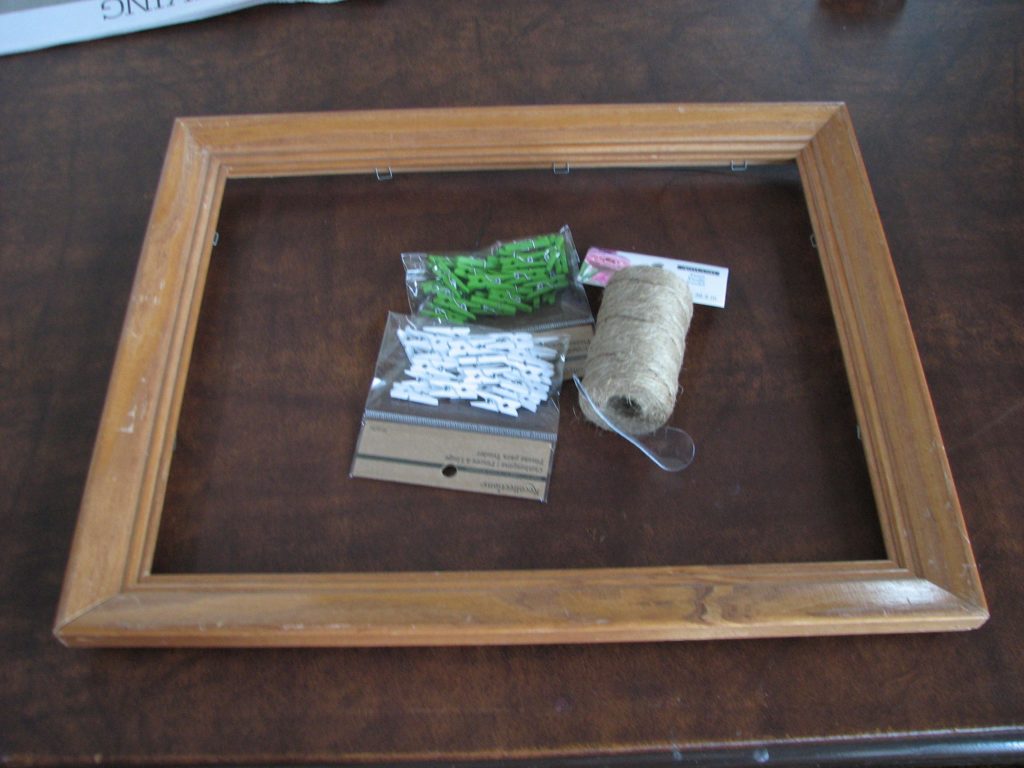
Materials
There are only a few “must have” materials:
- Frame without glass (look at garage sales!)
- Twine, ribbon, rope
- Clothespins (they come in many sizes and colors now, so you have lots of choices)
- Thumbtack or nail
- Hammer
Those are the “must haves.” The rest are will depend on what you want your frame to look like. Some ideas are:
- Paint to paint the frame
- Cardboard and fabric to make a back
- Glue
- Embellishments for the frame such as fake flowers, buttons, dog id tags, etc.
Step 1
I am going to show you how to make a backing, as most people will want one. But if you have a pretty colored wall, you may wish to leave the frame empty!
If your frame came with a cardboard backing, great! If not, you can make one using a box. Measure the back of the frame and subtract roughly 1/8” of an inch so your cardboard will slide in easy. Cut your piece and then trim as necessary until it fits.
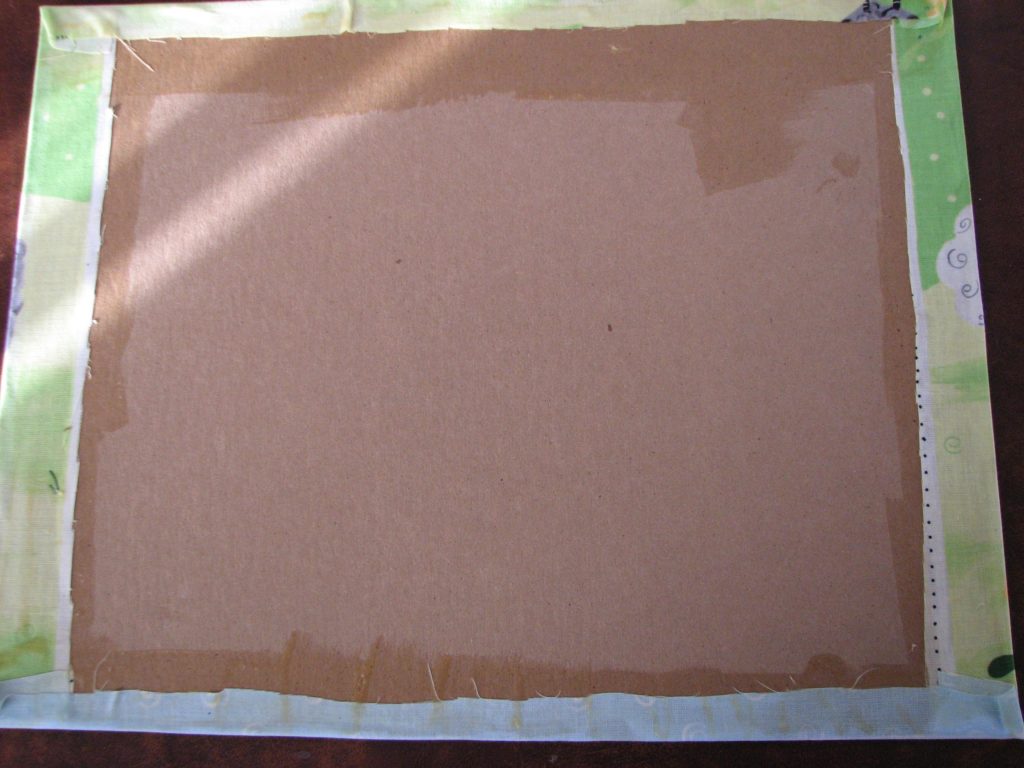
TIP: If you are going to use a bulky fabric like an upholstery or faux fur, you may need to cue your cardboard down a bit more. You can test by wrapping the fabric around the piece of cardboard and seeing if it still fits in the frame.
Cut your fabric about ½” beyond the cardboard all the way around. Lay the cardboard on the fabric back and then fold the fabric around it and glue down.
Place in the frame.
TIP: I like using Mod Podge because you can put it on the cardboard, but also over the top of the fabric to create a better seal. You can use antiquing Mod Podge or one with some glitter and spread it over the front of your fabric to create a unique look if desired!
Step 3
Decide how many “clotheslines” you want on your frame. Think about the size of your images and how many you are trying to fit in your frame.
Cut your twine, ribbon, etc., so it’s 6” longer than the frame.
Double knot at one end. Put the thumbtack or nail through the twine on the inside of the knot and lightly hammer it into the edge of the frame.
Pull twine really tights and repeat on the other side.
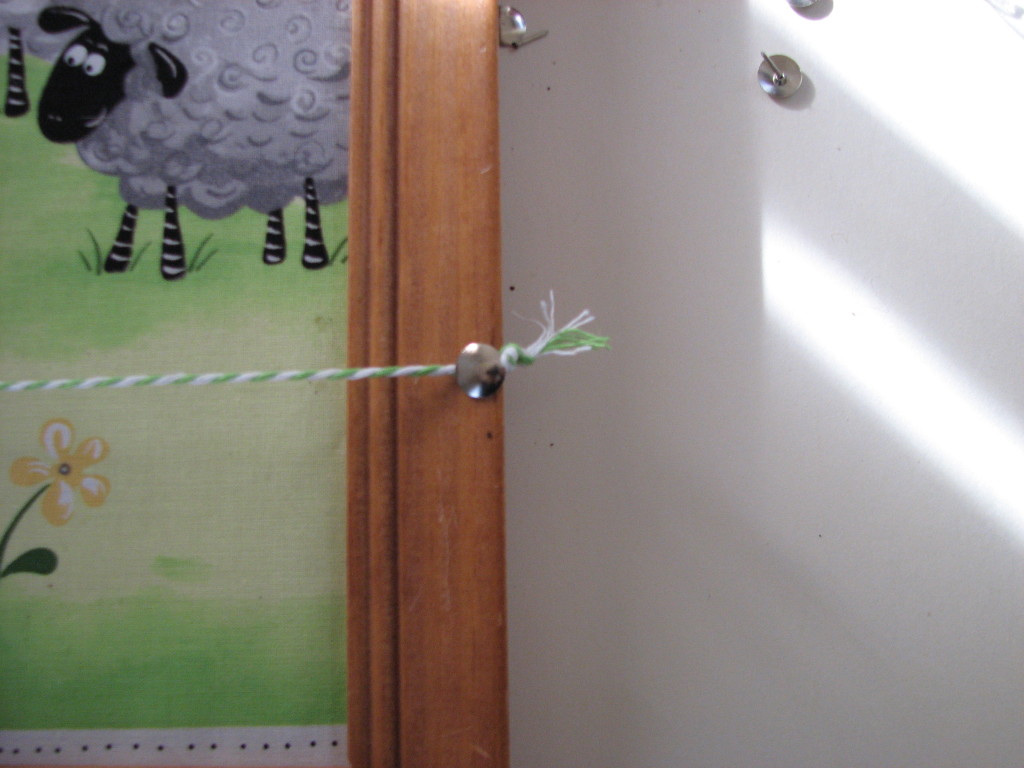
TIPS: If your wood frame is really hard, you can pre-drill a small whole for the tack or use a nail. If your twine or ribbon frays easily, glue or burn the edge and you can glue the knot too.
Step 4
Add your images! Using the clothespins, you can play with arrangement and, even better, it’s easy to switch our pictures when you get tired of looking at them, unlike a traditional framing job.
It’s a great way to display your dog’s ribbons if you compete in a dog sport.
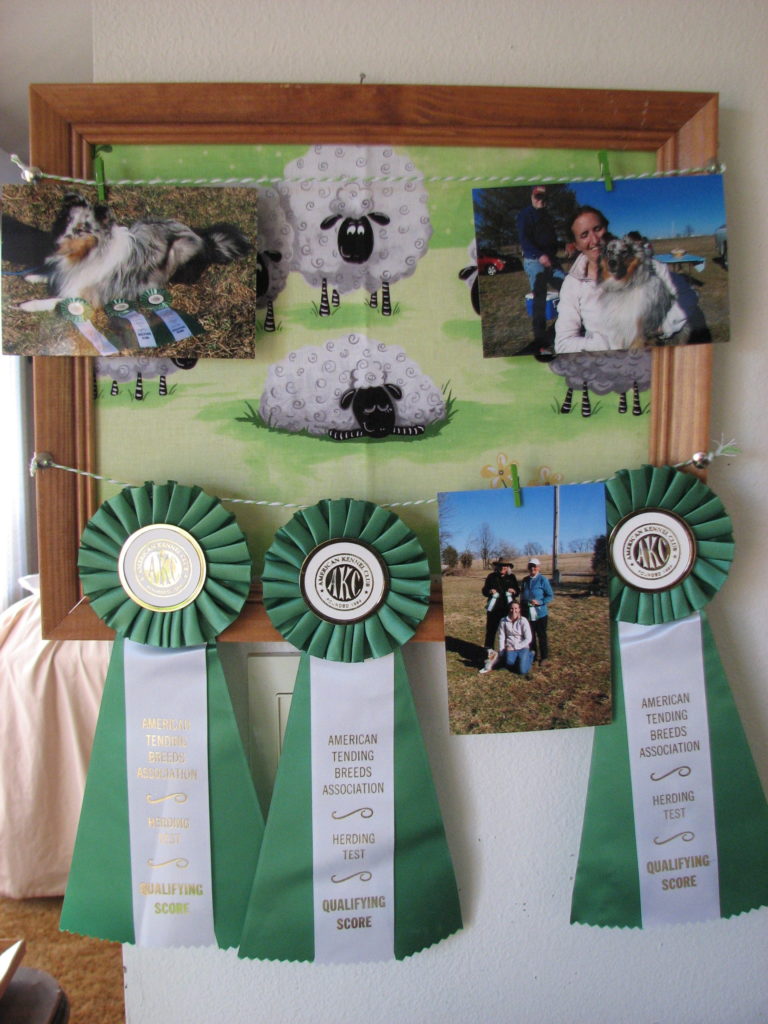
A Chalkboard back adds a fun element:
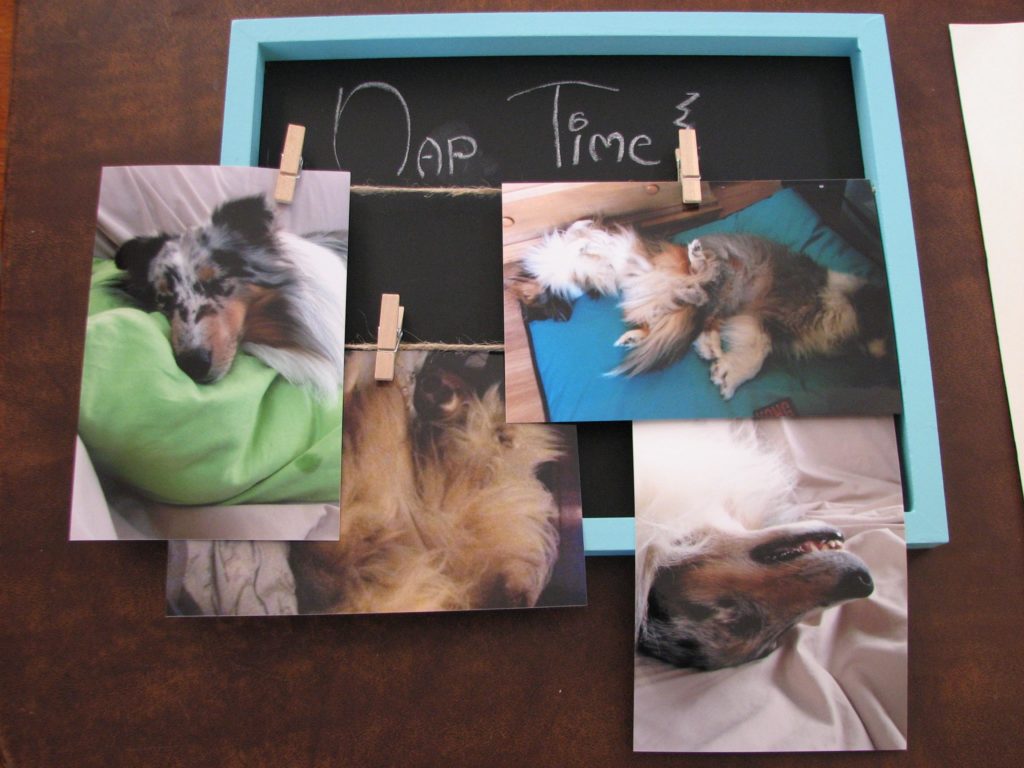
Use a chalkboard back to add notes about the images. You can do this easily by buying chalkboard paint and painting a backing for your frame. For this, I would recommend a wood back instead of cardboard.

Again, it’s easy to change your images (and message!) when you get bored! In my case: from “Nap Time” “My Pup Growing Up.”
